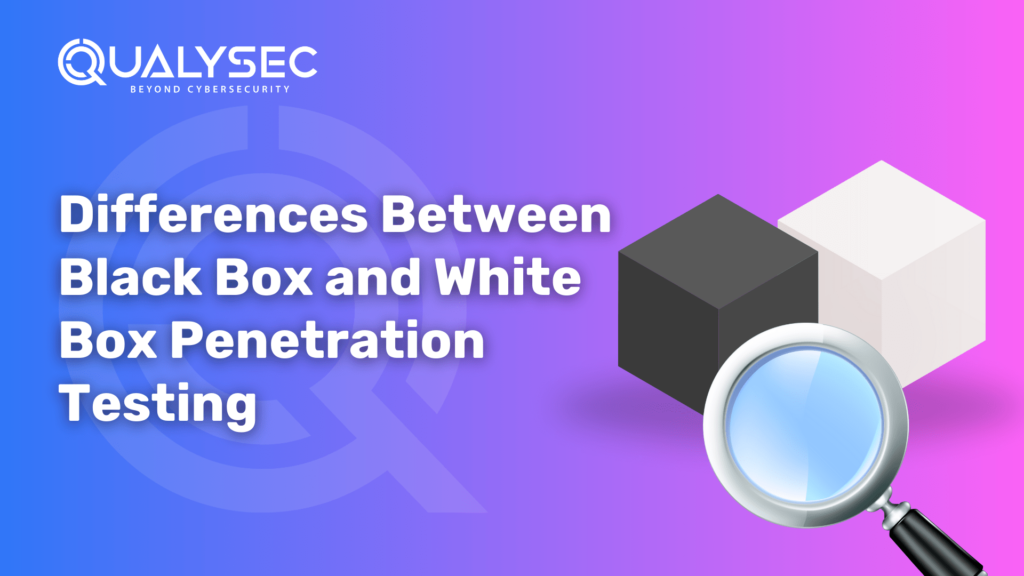Differences Between Black Box and White Box Penetration Testing
Penetration testing which is essential for a secure cyber-physical system can be broadly classified into black box and white box. The first simulates outside attacks with limited knowledge about a system, while the latter offers extensive knowledge of the same system. Understanding Black Box Penetration Testing vs. white Box Penetration Testing helps you choose an adequate approach to security. What Is Black Box Testing? Black box penetration testing is a blind software testing method. It simulates an outside attack without any knowledge of the system’s layout. It assists businesses: This “blind testing” compels the auditor—an ethical hacker or penetration tester—on the spot to discover an open path access into the network. The thought is to detect vulnerabilities that can be missed. Ideally, nothing that is vulnerable will be discovered. If something is found, adjustments can be made before any real hacker discovers that same path. What Is White Box Testing? White box penetration testing also goes by clear box testing, glass box testing, transparent box testing, and structural testing. Your tester, with this advanced pen testing type, will get full access to your source code, network protocol, and control structures. With this test, the tester will be aware of where to seek security vulnerabilities. The test is still subjecting the assessor to carrying out a thorough examination of the internal structure of the software or system. They will normally check for security flaws such as butter overflows, SQL injection flaws, authentication errors, data leakage, and permission defects. “This highlights the difference between black box vs white box penetration testing—black box tests mimic real cyberattacks, while white box tests dig deep into internal vulnerabilities.” Black Box vs. White Box Testing: How Are They Different? Testing Objective Ensure a system works flawlessly for the end user Ensure an application code is high-quality Focus Focuses on validating the output against the expected result for given inputs Focuses on internal code structure, paths, and logic Performed By Testers who do not need coding knowledge Developers or testers with programming skills Scope Generally less extensive and focused on specific functionalities, so quicker Covers all code paths, conditions, and loops, so more time-consuming Types Functional testing, system testing, and acceptance testing. Testing is based on system requirements and use cases (user feedback) Unit testing, integration testing, and code coverage analysis. Testing is based on code logic, flowcharts, and design documents Programming Knowledge Not required Required 1. Testing Objective Black Box Testing Black box testing is employed when you wish to conduct an outside audit to validate your security stance. Most hackers do not know how your system works since most are unaware, making them “blind.” You can also utilize it in order to test: White Box Testing White box security testing is applied when you are testing a system that is critical because it allows you to conduct detailed checks on its defenses. Because the tester has full access to your system, they can analyze your code paths, determine vulnerabilities, and conduct checks on data encryption and protection to determine vulnerabilities that a black box test might not have discovered. Organizations apply white box testing when: 2. Focus Black Box Testing Black box pentest is concerned with examining your system’s external behavior in terms of inputs (the actions of the tester) and outputs (the reaction of the system). The tester evaluates how your system reacts to every attack vector, including input tampering, authentication violations, and unauthorized access. This is an end-to-end method that’s confined to your system’s external interfaces that affect the end-user, like web servers, databases, integrated systems, and user experience and user interface. White Box Testing White box pentest is concerned with a thorough review of your system’s internal paths and code. It looks at how data moves through your entire system, how various components interact with that data and with each other, and how secure your control structures are. These tests also examine your system code to identify inefficiencies, weak encryption usage, and logical mistakes that might generate potential security flaws. In these instances, the tester will employ their programming experience to identify security flaws. 3. Qualified Evaluators Black Box Testing Black box testing is conducted by outside security testers, certified ethical hackers, or penetration testers. White Box Testing White box tests are usually carried out by developers, security analysts, or individuals with advanced knowledge of your codebase and system architecture (control structures, data flows, etc.). Developers usually carry out white box testing. 4. Types Black Box Testing Black box testing methods are categorized according to the testing purpose. The following are the two most widely used black box testing types: Functional testing. This testing ensures that the system input and output functions correctly. It comprises smoke, sanity, integration, regression, system, and user acceptance testing. Nonfunctional testing (NFT). NFT tests a system’s capacity to manage threats, withstand attacks, and perform under stress without being aware of the internal code organization. It comprises usability, load, performance, compatibility, stress, and scalability testing. White Box Testing White box testing techniques are categorized depending on the software element that is being targeted. The following are some white box testing techniques: Unit testing. Unit tests assist you in making sure that every piece of your system is working correctly. Integration testing. It comes after unit testing and is about whether each piece of code that has been tested works with the others, i.e., tests the interfaces of each piece. Regression testing—This is a process that ensures recent changes are working as expected and does not adversely impact the use of the system. It entails re-executing tests to ascertain that the system is still functioning correctly. 5. Applicability Black Box Testing Black box testing is normally done at the end of thorough testing procedures since it tests how the system functions from the outside and assists in locating bugs that could impact the security of the system. It can, however, be done independently to test for





